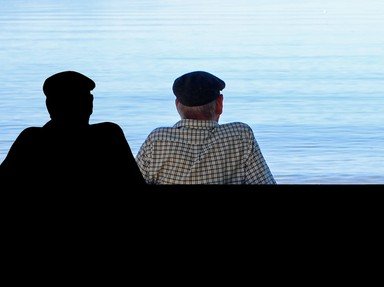Quiz Answer Key and Fun Facts
1. This famous and popular English poet lived a scandalous life, so much so that he finally left England to live in Italy and Greece, in self-imposed exile. What is the name of this poet?
2. He was the 13th ruler of the Nguyen Dynasty, the last Emperor of Vietnam. He took refuge abroad after violence began between French colonial forces and Ho Chi Minh's Viet Minh followers. Who was this Vietnamese emperor?
3. Leon Trotsky was one of the founders of the Russian Revolution. After falling out with Stalin, he was deported from the Soviet Union. He ended up in Mexico, where he was assassinated in 1940 by a Spanish Communist. What was the name of Trotsky's killer?
4. This Nobel Prize-winning Russian writer was sent into exile by the government of the Soviet Union, after he began to write of his experiences in Soviet prison camps. What is the name of this brilliant author?
5. This man was President of an island nation for over thirty years, until he was finally overthrown and forced into exile. Big hint: They found a couple thousand pairs of his wife's shoes in her closet after they left. Who was he?
6. Here's another island nation dictator. He inherited his position from his father; perhaps that's why he was often referred to as "Baby". He was exiled to France after an uprising in his country. What is the name of this corpulent dictator?
7. This petite athlete was a sensation at the 1976 Summer Olympics, and received a heroine's welcome when she went home. But she wanted out, she wanted freedom, and asked for asylum in the United States. What is her name?
8. She was born in Cuba, and she was known as the "Queen of Salsa". She left Cuba after Fidel Castro came to power. Her trademark: Shouting out "Azucar!" Who was this Cuban singer?
9. He was president of Peru for ten years, and ran the country with an iron fist. He later went into exile, escaping to the country of his ancestors. What is the name of this Peruvian strongman?
10. Idi Amin, the murderous African dictator, terrorized the citizens of Uganda for many years. He finally had to flee, and ended up in exile, where he eventually went to meet his maker. What's the name of the country where Idi Amin spent his last years?
Source: Author
robbieh
This quiz was reviewed by FunTrivia editor
DakotaNorth before going online.
Any errors found in FunTrivia content are routinely corrected through our feedback system.
